Related Research Articles
Mehmet Toner is a Turkish biomedical engineer. He is currently the Helen Andrus Benedict Professor of Surgery at Massachusetts General Hospital (MGH) and Harvard Medical School, with a joint appointment as professor at the Harvard-MIT Division of Health Sciences and Technology (HST).

Alan Simon Finkel is an Australian neuroscientist, inventor, researcher, entrepreneur, educator, policy advisor, and philanthropist. He was Australia’s Chief Scientist from 2016 to 2020. Prior to his appointment, his career included Chancellor of Monash University, President of the Australian Academy of Technology and Engineering (ATSE), and CEO and founder of Axon Instruments, and CTO for the electric car start-up Better Place Australia.

Cato T. Laurencin, M.D., Ph.D., FREng SLMH,, is an American engineer, physician, scientist, innovator and a University Professor of the University of Connecticut.

The American Institute for Medical and Biological Engineering (AIMBE) is a non-profit organization founded in 1991, and headquartered in Washington. It represents 50,000 medical and biomedical engineers, and academic institutions, private industry, and professional engineering societies.

Rachid Yazami is a Moroccan scientist, engineer, and inventor. He is best known for his critical role in the development of the graphite anode for lithium-ion batteries and his research on fluoride ion batteries.

Ching Wan Tang is a Hong Kong–American physical chemist. He was inducted into the National Inventors Hall of Fame in 2018 for inventing OLED, and was awarded the 2011 Wolf Prize in Chemistry. Tang is the IAS Bank of East Asia Professor at the Hong Kong University of Science and Technology and previously served as the Doris Johns Cherry Professor at the University of Rochester.
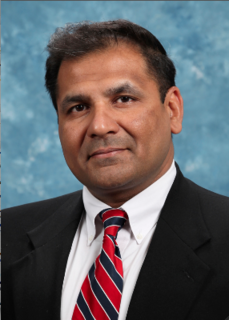
Amit Goyal is a SUNY Distinguished Professor and a SUNY Empire Innovation Professor at SUNY-Buffalo. He leads the Laboratory for Heteroepitaxial Growth of Functional Materials & Devices He is also Director of the New York State Center of Excellence in Plastics Recycling Research & Innovation, an externally funded center with initial funding of $4.5M for three years at SUNY-Buffalo. He is the Founding Director of the multidisciplinary and transdisciplinary RENEW Institute at SUNY-Buffalo in Buffalo, New York and served as Director from 2015-2021. RENEW is an internally funded research institute at SUNY-Buffalo. For his contributions to UB, in 2019, he was awarded the University at Buffalo or SUNY-Buffalo President's Medal, which recognizes “outstanding scholarly or artistic achievements, humanitarian acts, contributions of time or treasure, exemplary leadership or any other major contribution to the development of the University at Buffalo and the quality of life in the UB community.” This is one of the highest recognitions given at the university.
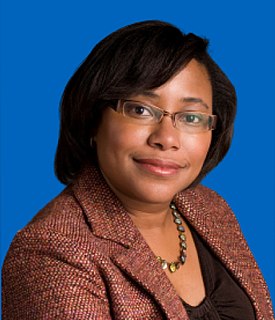
Paula Therese Hammond is a David H. Koch Professor in Engineering and the Head of the Department of Chemical Engineering at the Massachusetts Institute of Technology (MIT). She was the first woman and person of color appointed as head of the Chemical Engineering department. Her laboratory designs polymers and nanoparticles for drug delivery and energy-related applications including batteries and fuel cells.
The Florida Inventors Hall of Fame is an organization that honors Florida inventors, and is housed in the USF Research Park at the University of South Florida (USF) in Tampa. It was founded in 2013 by Dr. Paul R. Sanberg, senior vice president for research and innovation at USF, and is one of five state-specific halls of fame dedicated to inventors in the United States. In April 2014, State Senator Jeff Brandes sponsored the recognition of it, honoring the hall of fame for its commitment to invention, discovery, innovation, and excellence.
Molly S. Shoichet, is a Canadian science professor, specializing in chemistry, biomaterials and biomedical engineering. She was Ontario's first Chief Scientist. Dr. Shoichet is a biomedical engineer known for her work in tissue engineering, and is the only person to be a fellow of the three National Academies in Canada.
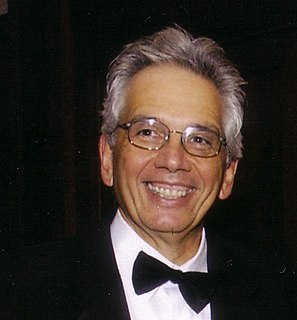
Richard D. Gitlin is an electrical engineer, inventor, research executive, and academic whose principal places of employment were Bell Labs and the University of South Florida (USF). He is known for his work on digital subscriber line (DSL), multi-code CDMA, and smart MIMO antenna technology all while at Bell Labs.
Michael A. Caligiuri, M.D. is a physician scientist focused on oncology and immunology. He is currently the president of the City of Hope National Medical Center and the Deana and Steve Campbell Physician-in-Chief Distinguished Chair. He was elected president of the American Association for Cancer Research, the world's largest cancer research organization, for 2017–2018. He was previously the CEO of the James Cancer Hospital (2008-2017), Director of the Comprehensive Cancer Center (2003-2017), and Director of the Division of Hematology-Oncology (2000-2008) at the Ohio State University. He was elected to the United States National Academy of Medicine in 2018.
Sudeep Sarkar is a professor and chairman of the Department of Computer Science and Engineering at the University of South Florida, Tampa. He was named Fellow of the Institute of Electrical and Electronics Engineers (IEEE) in 2013 for contributions to computer vision.
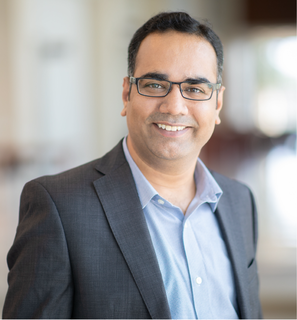
Akhilesh K. Gaharwar is an Indian academic and an associate professor in the Department of Biomedical Engineering at Texas A&M University. The goal of his lab is to understand the cell-nanomaterials interactions and to develop nanoengineered strategies for modulating stem cell behavior for repair and regeneration of damaged tissue.

Laura E. Niklason is a physician, professor and internationally recognized researcher in vascular and lung tissue engineering. She is the Nicholas M. Greene Professor of Anesthesiology and Biomedical Engineering at Yale University and co-founder, chief executive officer and president of Humacyte, a regenerative medicine company developing bioengineered human tissues.
Autar Kaw is a professor of mechanical engineering at the University of South Florida. In 2012, he won the U.S Professor of the Year award from the Carnegie Foundation for Advancement of Teaching and the Council for Advancement and Support of Education. Kaw's main scholarly interests are in education research methods, open courseware development, flipped and adaptive learning, and the state and future of higher education.
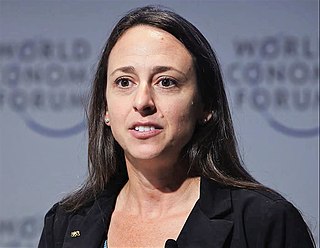
Amy Elizabeth Herr is a Professor of Bioengineering at the University of California, Berkeley and a Chan Zuckerburg (CZ) Biohub Investigator. She is a Fellow of the National Academy of Inventors and the American Institute of Medical and Biological Engineering and co-founded a biotechnology company called Zephyrus Biosciences.

Chenzhong Li is a Chinese-born Canadian & American biomedical engineer, chemist, inventor, professor, journal editor and program director who is currently a professor in the Center of Cellular and Molecular Diagnosis at Tulane University School of Medicine. Li is the co-Editor-in-Chief of the journal Biosensors and Bioelectronics (Elsevier) and the associate editors of journals RESEARCH (AAAS) and Biosensors (MDPI).
Norma A. Alcantar is a Mexican–American chemical engineer. She is a professor in the Department of Chemical Engineering and Biomedical Engineering at the University of South Florida. In 2019, Alcantar was elected a fellow of the American Institute for Medical and Biological Engineering for "outstanding contributions in providing drinking water for low-income communities and contributions to disrupting amyloid fibril formation in Alzheimer's research".
Umut Atakan Gurkan is a Turkish–American mechanical and biomedical engineer. As the Warren E. Rupp Associate Professor at Case Western Reserve University, Gurkan investigates hemoglobin, red blood cells, blood rheology and microcirculation in health and disease and with targeted therapies and gene-based cures.
References
- ↑ Peterson, Lindsay (28 August 2009). "At USF, there's a place for inventors". Tampa Tribune. EBSCO. Retrieved 4 September 2014.
- ↑ "Paul R. Sanberg, PHD". University of South Florida. Archived from the original on May 7, 2014. Retrieved 18 June 2015.
- ↑ CV at University of South Florida
- ↑ official faculty page at University of South Florida
- ↑ Gunther, Judith Anne (May 1993). "Treating disease without drugs". Popular Science. 242 (5): 78–79. Retrieved 4 September 2014.
- ↑ "Senior Vice President". Usf.edu. University of South Florida. Retrieved 4 September 2014.
- ↑ "Australia: The world is watching." Retrieved 7 October 2018. https://www.innovationaus.com/2018/08/Australia-The-world-is-watching
- ↑ United States Patent and Trademark Office, Nomination Evaluation Committee. Retrieved 7 October 2018. https://www.uspto.gov/learning-and-resources/ip-programs-and-awards/national-medal-technology-and-innovation/nomination
- ↑ Nambia, Smitha (1 September 2014). "Bad Memories Can be Changed into Good Ones, Say Scientists". International Business Times. Retrieved 4 September 2014.
- ↑ Thompson, Dennis (27 August 2014). "Scientists 'Rewrite' Bad Memories in Mice". Health Day. ScoutNews, LLC. Retrieved 4 September 2014.
- ↑ Hayden, Thomas. 2000. "A Little Nicotine Could Be Good for You." Newsweek 135, no. 10: 53. MAS Ultra - School Edition, EBSCOhost (accessed September 4, 2014).
- ↑ "Umbilical cord hope for stroke victims." Australian, Feb. 21, 2001. TheNewspaper Source, EBSCOhost (accessed September 4, 2014).
- ↑ Leslie, Papp. n.d. "Umbilical cord cells could be brain-savers." Toronto Star (Canada), n.d. Newspaper Source, EBSCOhost (accessed September 4, 2014).
- ↑ "Victims of stroke could be helped by babies." Times, The (United Kingdom), Feb. 2, 2001. Newspaper Source, EBSCOhost (accessed September 4, 2014).
- ↑ Pan Pacific Symposium, Taichung https://www.eurekalert.org/pub_releases/2011-04/uosf-psr042911.php
- ↑ AAAS-Lemelson Invention Ambassadors Program http://www.inventionamb.org/ambassadors/paul-sanberg-phd///
- ↑ Florida Academy of Science, Medalist Awardees http://www.floridaresearch.org/_blog/Florida_Research/post/2015-medalist-of-the-florida-academy-of-sciences//
- ↑ Florida Inventors Hall of Fame, Inductees http://www.floridaresearch.org/_blog/Florida_Research/post/2015-medalist-of-the-florida-academy-of-sciences//
- ↑ ANU Alumni Spotlight https://www.anu.edu.au/alumni/our-alumni/spotlight/professor-paul-sanberg//
- ↑ Sigma XI John P. McGovern Award Recipients https://www.sigmaxi.org/programs/prizes-awards/john-mcgovern/award-winner/paul-sanberg/
- ↑ Institute of Electrical and Electronics Engineers https://www.ieee.org/
- ↑ Bryden Alumni Award Recipients https://yfile.news.yorku.ca/2018/08/26/announcing-the-2018-bryden-alumni-award-recipients/
- ↑ AIMBE Fellow Advocate Award https://aimbe.org/awards/fellow-advocate-award/